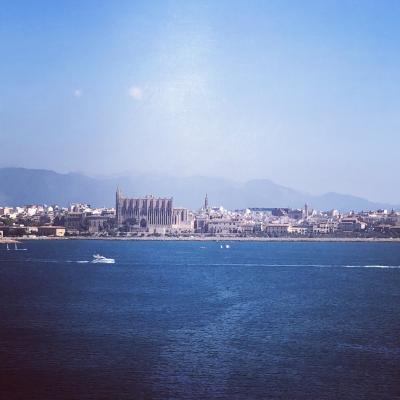How does the architecture in Palma reflect the island’s cultural history and traditions?
Similar Topics
palma architecture
mallorca cultural history
moorish influence
palma cathedral
balearic style
mediterranean climate buildings
gothic architecture palma
palma historical character
The architecture in Palma, the capital city of Mallorca, serves as a vivid reflection of the island’s complex cultural history and rich traditions. Throughout its streets, visitors encounter a harmonious blend of styles that narrate the city’s journey through time. The medieval core of Palma is dominated by narrow, winding alleys and historic buildings, many of which date back to the period of Moorish rule and subsequent Christian reconquest. This blend of Islamic and Gothic influences is evident in the intricate stonework and the layout of the old town, which preserves a sense of its ancient heritage. The iconic Palma Cathedral, locally known as La Seu, stands as a monumental symbol of this cultural synthesis, displaying stunning Gothic architecture with touches of Renaissance detail, a testament to the island’s religious and artistic heritage.
The whitewashed townhouses with wooden balconies lining Palma’s streets reflect the traditional Balearic style, designed to suit the Mediterranean climate and lifestyle. These buildings often feature local limestone and terracotta tiles, materials that have been used on the island for centuries. The influence of different periods is also clear in the presence of Baroque and Modernist buildings, as the city has continuously evolved while maintaining its historical character. Public squares and fountains often draw from Moorish design aesthetics, embodying a connection to water and nature that is deeply rooted in Mediterranean culture. This architectural continuity underscores Palma’s identity as a place where various epochs and cultures converge, preserving its traditions while embracing modernity.
Moreover, Palma's architecture is not only about grand monuments but also about the everyday living spaces that illustrate the island’s social customs. Courtyards and patios are common features, offering private, shaded retreats that are essential to local life in Mallorca’s warm climate. This concept of inward-looking homes with external openness speaks to the importance of family and community in island culture. Overall, Palma’s architecture is a living archive, capturing the layers of influence — from prehistoric settlements to Roman occupation, Moorish rule, and Christian sovereignty — all of which have shaped the island’s unique character and charm. Through its buildings, Palma invites visitors to explore a dynamic narrative of cultural convergence and enduring tradition.
The whitewashed townhouses with wooden balconies lining Palma’s streets reflect the traditional Balearic style, designed to suit the Mediterranean climate and lifestyle. These buildings often feature local limestone and terracotta tiles, materials that have been used on the island for centuries. The influence of different periods is also clear in the presence of Baroque and Modernist buildings, as the city has continuously evolved while maintaining its historical character. Public squares and fountains often draw from Moorish design aesthetics, embodying a connection to water and nature that is deeply rooted in Mediterranean culture. This architectural continuity underscores Palma’s identity as a place where various epochs and cultures converge, preserving its traditions while embracing modernity.
Moreover, Palma's architecture is not only about grand monuments but also about the everyday living spaces that illustrate the island’s social customs. Courtyards and patios are common features, offering private, shaded retreats that are essential to local life in Mallorca’s warm climate. This concept of inward-looking homes with external openness speaks to the importance of family and community in island culture. Overall, Palma’s architecture is a living archive, capturing the layers of influence — from prehistoric settlements to Roman occupation, Moorish rule, and Christian sovereignty — all of which have shaped the island’s unique character and charm. Through its buildings, Palma invites visitors to explore a dynamic narrative of cultural convergence and enduring tradition.
🧩 Related Questions
Related Question
How do local cultures and traditions relate to the calas in Mallorca?
Related Question
What are the best hiking trails in the Serra de Tramuntana mountain range for nature lovers?
Related Question
How do intergenerational conversations about language identity affect family dynamics in Mallorca?

